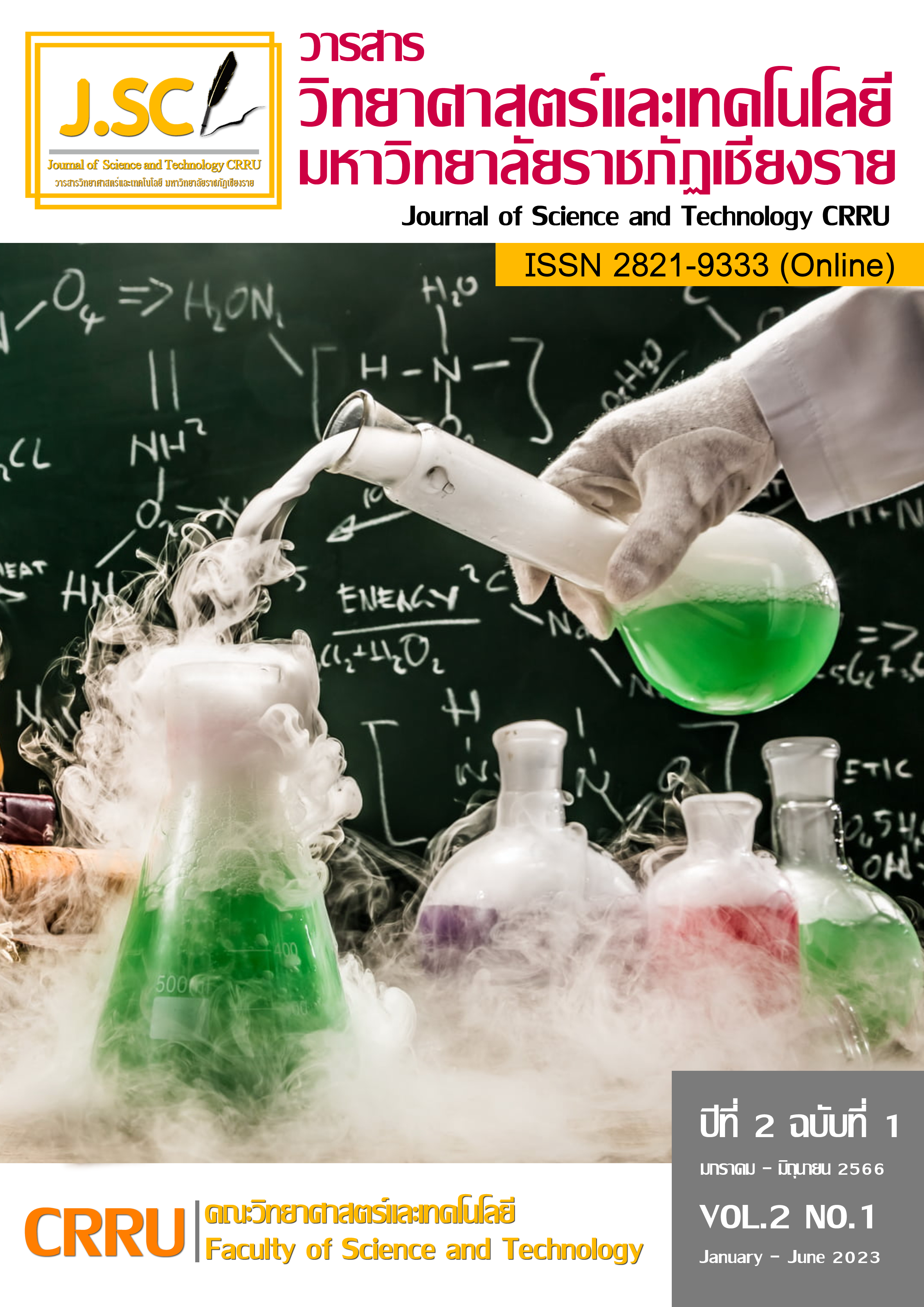To study the optimum ratio and physical properties of charcoal briquettes from Irvingia malayana Oliv. ex A.W. Benn.
Main Article Content
Abstract
The objective of this research is to use wild almond fruit (Irvingia malayana Oliv. ex A.W. Benn.) with lots in rural areas for produce the charcoal briquettes. The calorific in the burning of wild almond at 1000 °C burning effect takes 3 hours to burn. We used the adhesive pasty glue as a binder briquette with the cold briquette process. The results showed that the wild almond can be burned to charcoal black and lightweight. By grinding wild almond charcoal into small size, these charcoals were mixing with the pasty glue a ratio of 6:1. We have to compress the mixing charcoal molded into fuel briquettes. Charcoal briquettes are performed the stable and non-broken products. After leading Solar Green House drying, the results of the physical properties of Charcoal briquettes from the wild almond compared with Charcoal briquettes from wood mixed, found Charcoal briquettes from the wild almond features and quality in the production of charcoal briquettes. Because combustion rate 3.60 g/min, fixed, ash content 17.14 %, moisture content 7.18 % and the calorific value 6,500 cal/g. This is high compared with the benchmark Community products charcoal briquettes, the calorific value cannot be less than 5,000 cal/g. It held that the effect of the wild almond Charcoal briquettes with high energy efficiency. Ideal for cooking in households or communities to commercial production. Due to non-explosion, high combustible, non-soot, non-smoke and odorless. And the calorific value of charcoal briquettes from the wild almond with high calorific value than charcoal briquettes of wood mixed the commercially available. Charcoal briquettes of wood mixed. The calorific value is 6,330 cal/g. Due to these advantages our briquettes are possibly to instead of firewood and charcoal from natural forest which can be reduced the global warming by another way.
Article Details

This work is licensed under a Creative Commons Attribution-NonCommercial-NoDerivatives 4.0 International License.
Journal of TCI is licensed under a Creative Commons Attribution-NonCommercial-NoDerivatives 4.0 International (CC BY-NC-ND 4.0)
References
รุ่งโรจน์ พุทธีสกุล. (2553). ถ่านอัดแท่งจากถ่านกะลามะพร้าวและถ่านเหง้ามันสำปะหลัง. (วิทยานิพนธ์ปริญญามหาบัณฑิต). มหาวิทยาลัยศรีนครินทรวิโรฒ, สาขาวิชาอุตสาหกรรมศึกษา.
นิภาพร นันตาวงษ์ และศิวิไล เขน่วม. (2555). ศึกษาแนวทางในการผลิตเชื้อเพลิงอัดแท่งจากใบไม้. สาขาวิศวกรรมอุตสาหกรรม คณะวิศวกรรมศาสตร์ มหาวิทยาลัยเทคโนโลยีราชมงคลล้านนาตาก.
ศุภชัย ธรรมศิริทรัพย์ และภูมิพัฒน์ ภาชนะ. (2556). การศึกษาการผลิตเชื้อเพลิงอัดแท่งจากหญ้าเนเปียร์. นิสิตระดับปริญญาวิทยาศาสตรมหาบัณฑิต สาขาวิชาวิทยาศาสตร์สิ่งแวดล้อม ภาควิชาเคมี คณะวิทยาศาสตร์ มหาวิทยาลัยบูรพา.
ฐานข้อมูลพรรณไม้ องค์การสวนพฤกษศาสตร์. (3 กรกฎาคม 2565). หนังสือพรรณไม้สวนพฤกษศาสตร์สมเด็จพระนางเจ้าสิริกิติ์ เล่ม 3. ไม้ต้นในสวน Tree in the Garden2. สืบค้นจาก: http://www.qsbg.org.
สังเวย เสวกวิหาร. (2555). ศักยภาพด้านพลังงานของเชื้อเพลิงอัดแท่งจากเปลือกมังคุด. มหาวิทยาลัยเทคโนโลยีราชมงคลพระนคร.
สำนักงานมาตรฐานผลิตภัณฑ์อุตสาหกรรม. (15 พฤษภาคม 2565). มาตรฐานผลิตภัณฑ์ชุมชนถ่านอัดแท่ง. สืบค้นจาก http://www.tisi.go.th/otop/pdf_file/tcps238_47.pdf.


